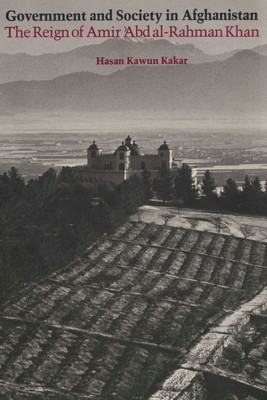
- We will send in 10–14 business days.
- Author: Hasan Kawun Kakar
- Publisher: University of Texas Press
- ISBN-10: 0292729006
- ISBN-13: 9780292729001
- Format: 15.2 x 22.9 x 2 cm, softcover
- Language: English
- SAVE -10% with code: EXTRA
Reviews
Description
This is an authoritative study of the administrative, social, and economic structure of Afghanistan during a decisive stage in its history. The period covered--the reign of the Iron Amir Rahman Khan--was in many ways the beginning of modern Afghanistan as a cohesive nation. Although Afghanistan had emerged as an entity in 1747, it was actually under the Amir that its borders were established, its internal unification completed, and the modern concept of nationhood implanted. Kakar approaches this complex process by taking into consideration both the internal and the external forces that influenced its development. Thus, modernization, centralization, and nationalization are seen as both defensive reactions to European imperialism and necessary preconditions to capital formation and, consequently, industrialization.The first part of the book covers the government of the Amir, from the personality of the ruler down to the operation of his new bureaucrats at the local level. Here Kakar presents a comprehensive treatment of the Afghan system of taxation and local government. The second part views these economic and social institutions from the perspective of the major segments of the populace--nomads, townsmen, tribes, women, slaves, landowners, mullahs, merchants, and so forth.
EXTRA 10 % discount with code: EXTRA
The promotion ends in 11d.22:30:05
The discount code is valid when purchasing from 10 €. Discounts do not stack.
- Author: Hasan Kawun Kakar
- Publisher: University of Texas Press
- ISBN-10: 0292729006
- ISBN-13: 9780292729001
- Format: 15.2 x 22.9 x 2 cm, softcover
- Language: English English
This is an authoritative study of the administrative, social, and economic structure of Afghanistan during a decisive stage in its history. The period covered--the reign of the Iron Amir Rahman Khan--was in many ways the beginning of modern Afghanistan as a cohesive nation. Although Afghanistan had emerged as an entity in 1747, it was actually under the Amir that its borders were established, its internal unification completed, and the modern concept of nationhood implanted. Kakar approaches this complex process by taking into consideration both the internal and the external forces that influenced its development. Thus, modernization, centralization, and nationalization are seen as both defensive reactions to European imperialism and necessary preconditions to capital formation and, consequently, industrialization.The first part of the book covers the government of the Amir, from the personality of the ruler down to the operation of his new bureaucrats at the local level. Here Kakar presents a comprehensive treatment of the Afghan system of taxation and local government. The second part views these economic and social institutions from the perspective of the major segments of the populace--nomads, townsmen, tribes, women, slaves, landowners, mullahs, merchants, and so forth.


Reviews